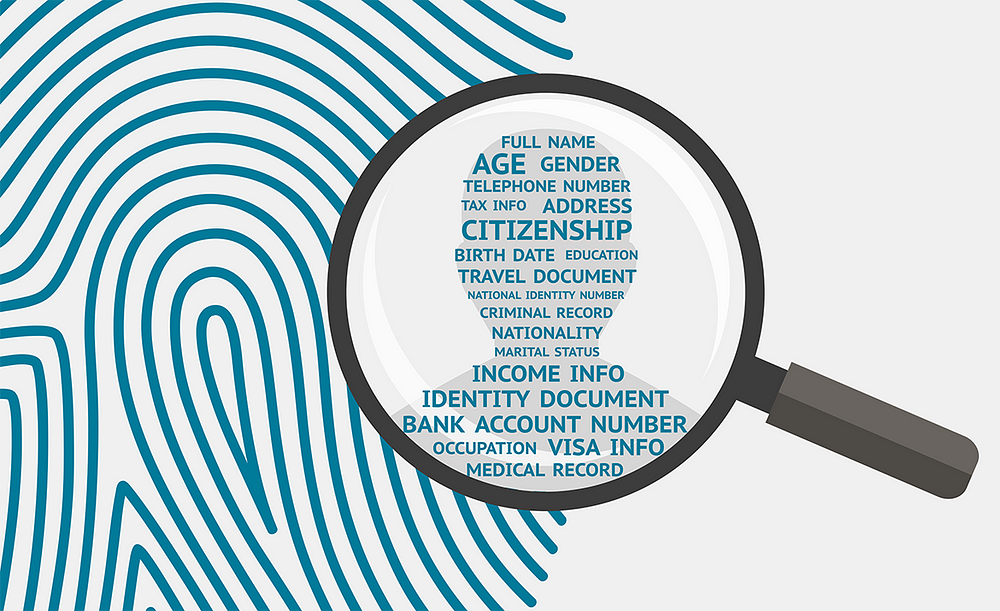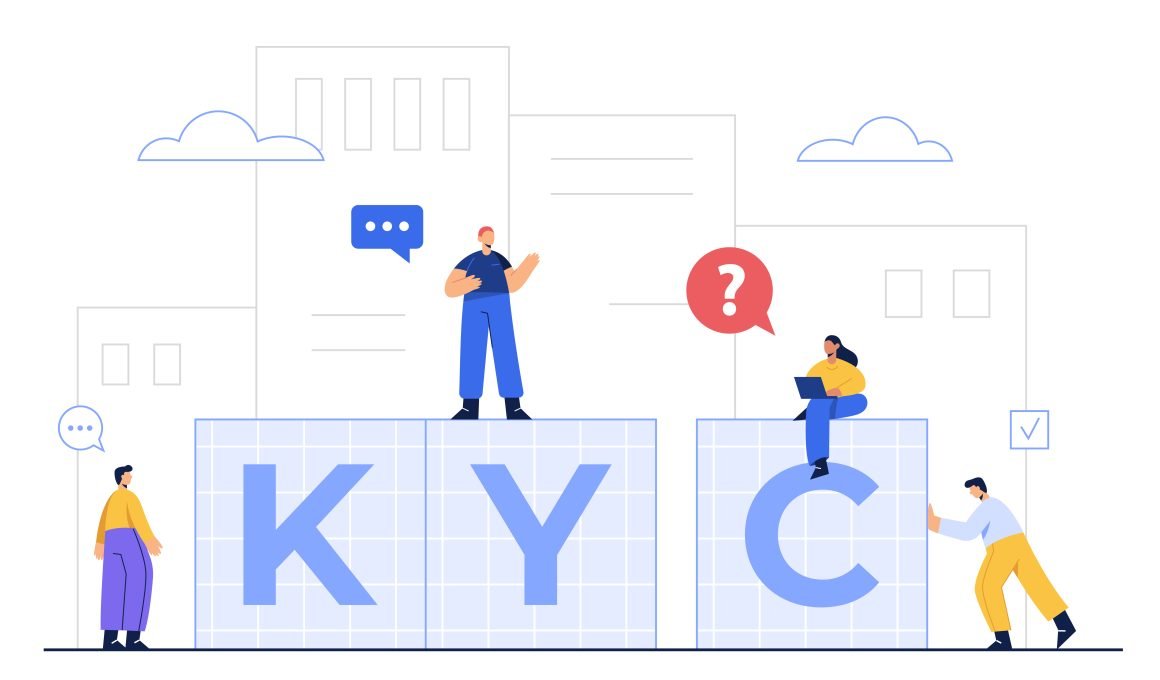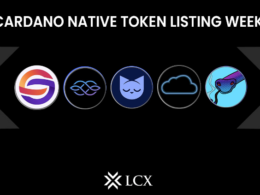Identity is a fundamental aspect of our daily lives. It enables us to assert our individuality, establish our rights, and engage in financial, social, and political activities.
In the context of blockchain, identity is equally essential, if not more critical. Blockchain technology’s decentralized and permissionless nature may appear to obviate the need for identity, but it raises new challenges that require innovative solutions.
Blockchain technology promises to revolutionize many aspects of our lives, including finance, governance, supply chain management, and social networking, to mention a few. However, for it to achieve its full potential and begin onboarding users en masse, it needs to address the problem of identification.
The traditional financial world relies on identity as a foundation for business. Institutions such as banks and insurance companies require their clients to provide identification documents to open accounts and access their services.
These institutions are also legally obligated to perform Know-Your-Customer (KYC) and Anti-Money Laundering (AML) checks to prevent fraud, money laundering, and terrorism financing.
The lack of identity verification in blockchain networks hinders the participation of these institutions in the DeFi space, limiting the potential of the technology to reach a wider audience.
However, introducing identities on the blockchain also raises concerns of censorship, surveillance, and government overreach, which goes against the principles of decentralization and permissionless.
Balancing traditional financial practices with the benefits of decentralization and permissionless is crucial for blockchain to achieve wider adoption and facilitate growth in the DeFi space.
This balance, aptly named RealFI, requires on-chain identification that preserves user privacy, secures the network, and ensures compliance with regulations.

But First, What is identity?
Identity is a complex concept that encompasses a vast array of qualities and characteristics that make up an individual. It includes not only physical attributes such as eye colour, height, and skin colour but also aspects such as name, nationality, race, profession, gender, and sexual identity. Our identity shapes the way we perceive ourselves and the world around us, as well as how we interact with others.
In interactions with others, trust is a crucial component, and our identity plays a significant role in establishing this trust. When meeting someone for the first time, we rely on their identity to be truthful and honest, whether it is for a business deal, a blind date, or a pizza delivery.
Trust in identity also extends to the digital realm, where the establishment of mutual trust is necessary for secure information exchange. Trusted Third Parties (TTP) are often involved in the verification of identity, whether for individuals, devices, or businesses. The use of a TTP creates a Trust Triangle, which provides interacting parties with proof of identity and establishes mutual trust.
Governments are often the issuer of identification documents, providing a unique identity to citizens using a minimum set of specific qualities or attributes.
Legal structures facilitate this model within and between countries, providing a reliable way to authenticate identity, particularly in the absence of any universal TTP.
However, physical identification documents have their limitations. They can be defrauded, lost, or stolen, and their replacement can be time and resource-intensive.
In contrast, digital identification credentials are becoming increasingly prevalent with the advent of more services online. However, managing numerous credentials can be redundant and time-consuming, and the risk of information being compromised is higher.
The economy of identity data and the limitations of PID and digital identity management systems have motivated the development of Self-Sovereign Identity (SSI).
SSI is a new digital paradigm of identity management, where the individual controls their identity without the intervention of centralized administrative authorities.
The individual has agency and control over their identity and how it is used. SSI management systems don’t rely on a centralized issuing body, eliminating the risk of situations where authentication isn’t possible and alleviating the difficulty of establishing trust in an interaction or identity transaction.
SSI effectively eliminates the need for a centralized verification of identity management systems, and decentralized blockchain networks offer an ideal platform to implement Self-Sovereign Identity Ecosystems. The public ledger in blockchain technology offers security through the use of strong encryption of data, and new SSI management structures can be created where identity cannot be forged or defrauded.
Let’s break down the main principles of Self-Sovereign Identity (SSI), which are as follows:
- Decentralization: SSI systems are decentralized, meaning that there is no central authority controlling the identity information. Instead, the information is distributed across a network of nodes, which are typically operated by individuals or organizations that have a stake in the system.
- Ownership: The individual owns their identity information and has complete control over how it is used. This means that they can choose to share only the information that is necessary for a particular interaction, and can revoke access to that information at any time.
- Interoperability: SSI systems are designed to be interoperable, meaning that they can work with other systems and platforms. This is achieved through the use of standardized protocols and formats that enable different systems to exchange identity information securely and efficiently.
- Verifiability: SSI systems are designed to be verifiable, meaning that it is possible to prove the authenticity of an identity claim without revealing any additional information. This is typically achieved through the use of zero-knowledge proofs or other cryptographic techniques.
- Privacy: SSI systems are designed to protect the privacy of the individual, meaning that their identity information is not shared more widely than necessary and that it is stored securely and encrypted where appropriate.
- Trust: SSI systems are designed to establish trust between parties in an interaction, without relying on a central authority. This is achieved through the use of distributed ledger technology, which provides a secure and tamper-proof record of all identity transactions.

IAMX — A possible solution
IAMX is a revolutionary token-based SSI and authentication system that seeks to address the issues surrounding identity recognition, authentication, and verification. By adding a new layer of identity to the internet, IAMX enables users to engage in online transactions as if they were logged in while protecting their human right to own, control, and hold their personal identity.
The overarching goal of IAMX is to empower every individual on Earth with a legally recognized identity. This is particularly important in developing nations, where a significant portion of the population lacks a state-recognized identity, preventing them from owning assets, maintaining bank accounts, or participating in online transactions. IAMX aims to solve this problem by providing a free biometric identity and pre-authenticated verifiable credential set container trusted by the verifier and owned and controlled by the holder.
IAMX is not the only decentralized identity (DID) solution, but it is the first SSI solution to financially incentivize and reward consumers each time they use their identity online. While other DID solutions are often siloed and provide limited functionality with respect to DID, IAMX regards identity, and ownership thereof, as a human right.
With the IAMX marketplace and ecosystem, telecommunication partners can facilitate mass onboarding through pre-authenticated identity credentials, while users can enjoy the internet with full ownership of their identity, using it seamlessly across all websites, web services, and mobile apps that require account creation, logins, or authentication.
The IAMX ecosystem is completely free for users, as transactions are monetized through affiliate revenues and the ecosystem. In developed nations, consumers spend an average of 400 days filling out online forms, which can lead to a waste of time and spread of personal information across thousands of websites.
IAMX provides users with complete ownership and control of their identity, building upon the principles of SSI. The holder of an IAMX identity can manage and control their identity, deciding to what extent they consent to the use of their identity data and having the ability to revoke consent at any time.
To maintain the shared principles of SSI, IAMX is working closely with members of the Sovrin Foundation, including Sovrin Technical Governance Board Member Markus Sabadello, a well-known leader in the field of digital and SSI.
Rewarded for Using your Identity
IAMX’s reward scheme is a groundbreaking approach that leverages the foundation of Self-Sovereign Identity (SSI) to provide users with tokenized financial incentives and accelerate transactions requiring user identity data. To make this possible, IAMX allows users to pre-authenticate their identity data through various means and store it in the IAMX Identity Wallet, where it’s securely managed by the user alone. This level of control and consent enables IAMX to reference user identity data from their wallet on the blockchain without compromising their privacy.
The ecosystem operates on a revenue sharing model based on affiliate marketing, which is responsible for $12 billion in e-commerce sales annually. The model involves a Merchant that pays a commission to other companies acting as Publishers, who promote the Merchant’s products or services.
In the IAMX ecosystem, third-party organizations, such as telecommunication companies, can act as Verifiers if they possess authenticated customer identity data. IAMX acts as the Publisher, receiving payments from prospective merchants and compensating Verifiers for their services.
What’s unique about IAMX’s approach is that it compensates the Customer or Identity Holder, making them a beneficiary of the value of their own identity, which has never been the case before.
IAMX’s innovative reward scheme benefits all parties involved and represents a significant advancement in the field of Self-Sovereign Identity.
How does it work:
IAMX provides four primary methods for users to establish their identity on-chain:
- Biometric Identity Terminal (BIT): At a BIT terminal, prospective users can create a biometric identity that includes physical identifiers of the face, iris, and fingerprints. Using a BIT, users can create and edit an identity, including uploading or associating certificates, licenses, and other identifying credentials to their IAMX ID wallet. IAMX seeks to provide identity solutions to the billions of people who do not currently have access to a state-recognized, legal identity by strategically placing BIT units around the world.
- Self-enrollment using pre-authenticated data: IAMX has partnered with large telecommunication companies that act as issuers of pre-authenticated, state-recognized identity data for the IAMX ecosystem. These companies provide a second means by which users can create and own their digital identity.
- Self-enrollment through on-demand KYC service: The third avenue for users to establish their identity on-chain is to self-enroll using an on-demand KYC service with a third-party organization coordinated through IAMX. Depending on the circumstance, the user may incur a small cost for this service.
- Self-enrollment using a wireless-enabled identity document: This method relies on a physical identification document that includes a wireless means of recognition and communication, such as NFC or RFID. With such a document, the user can quickly and easily create their identity using a BIT or the IAMX app on the mobile device.
Each method creates linked sets of unique identifiers or attributes provided by the user, known as “containers”. These containers consist of up to twenty attributes at once and are determined by use case or purpose, such as purchasing a mobile telephone service subscription, renting a car, or booking travel.
The container sets of linked attributes are hashed by the issuer using a one-way function and signed using their respective private keys. The public keys are published to the blockchain for future verification of the hash, and the hashed dataset is copied to the user’s IAMX Identity Wallet, where it is stored and encrypted. No real text data from any of the onboarding processes are shared, only the hashed sets of data.
One-click fulfilment
IAMX’s 1-Click fulfilment technology is a game-changer for Self-Sovereign Identity. With IAMX, users experience the internet as if they’re always logged in, no matter where they go or what services they use. IAMX adds an identity layer to the internet, which is both time-efficient and cost-effective.
Logging in, completing a form, or going through a KYC process can all be done with a single click. The IAMX identity wallet consists of hashed, pre-authenticated identity information, and the user-managed real-text CPAY component, which is essential for 1-Click completion of form data.
Verifiers, who may be merchants or service providers outside of the IAMX ecosystem, may request any combination of identity attributes from the user, depending on the purpose of the transaction. These attribute sets comprise the containers, which are hashed as part of the authentication process. The user must consent to release the information requested by the Verifier.
With the necessary attributes present in CPAY, combined with the established identity authentication process, IAMX streamlines form filling and identity authentication, making it possible with a single click. This process takes only a second, compared to the average of thirteen minutes for typical customer-merchant transactions that require form completion. This reduction translates into significant time and cost savings for both the customer and the merchant or service provider.
Furthermore, IAMX’s 1-Click fulfilment technology benefits merchants, who see an increase in customer conversion rates by a factor of 2.5. Combined identity authentication eliminates fraud and the need to store customer identity data, creating a safer and more secure ecosystem. IAMX’s 1-Click fulfilment technology is a significant advancement in Self-Sovereign Identity, making transactions faster, more efficient, and more secure than ever before.
Identity and crypto have been transformed by blockchain technology. Self-Sovereign identity and decentralized identity solutions provide greater control over personal data, while crypto offers a secure and transparent way to store and transfer value without intermediaries.
By incentivizing users with tokenized financial rewards and providing an unprecedented level of control over their data, IAMX is changing the way we think about transactions that require identity data.










